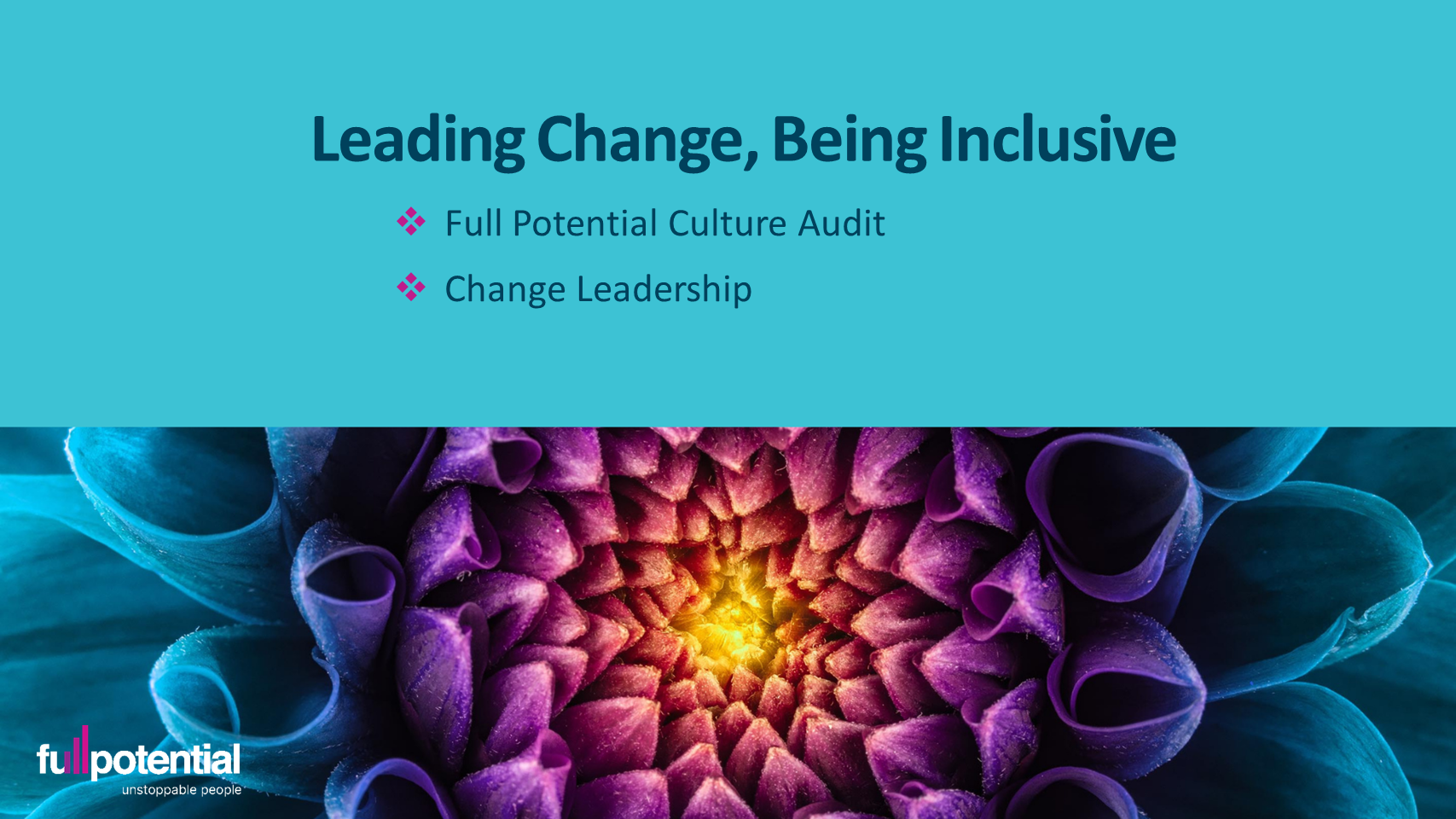
Leading change and being inclusive are critical skills for leaders and managers. To succeed in today’s fast-paced and rapidly changing business environment, you need to effectively lead your teams through change while promoting equality, diversity and inclusion.
When everyone feels included, morale goes up. This leads to higher satisfaction and empowerment within your organisation that will radiate throughout. Inclusion produces greater innovation and happier employees.
New knowledge and greater diversity boost performance.
We will work with you to create a culture audit, ascertaining how people currently feel and what can be done to enhance your culture. By creating a diverse and inclusive workplace, you are encouraging a wealth of knowledge and fresh new perspectives, enabling your organisation to overcome challenges and drive growth.
When ideas from employees are heard, they are more motivated to come together and outperform most other teams by 35% (research by McKinsey & Co.)

Our training programs on leading change and being inclusive are designed to help you develop the skills and strategies your people need to create a culture of innovation, inclusivity, and growth. Through workshops, mentoring and coaching, participants learn how to effectively communicate the need for change, build a sense of urgency and commitment, and create a shared vision for the future.
Contact us for more information.
High impact coaching alongside team and leadership interventions. Our Inclusive Leadership Programmes and the Full Brain Leadership model have helped thousands of individuals and organisations make a more inclusive workforce and culture. Contact us for more information.
We’ll get back to you within 48 hours to discuss a blueprint specific to your business.
While we have aimed to provide solutions of how we can help, we appreciate that every organisation, team and individual is unique. If you would value a more specific conversation to help address your needs, please complete the form and we will respond as soon as possible.
We have helped unlock the potential in over 1 million individuals, hundreds of teams and more then 2,500 organisations since 1998. These are some of the clients we have partnered with, many of whom have been working with us for years. We are extremely grateful for the recommendations and repeat business we receive.
Don’t just take our word for it though, read some of our client feedback
+44 (0)1628 488990
Contact us+44 (0)1628 488990
Contact us